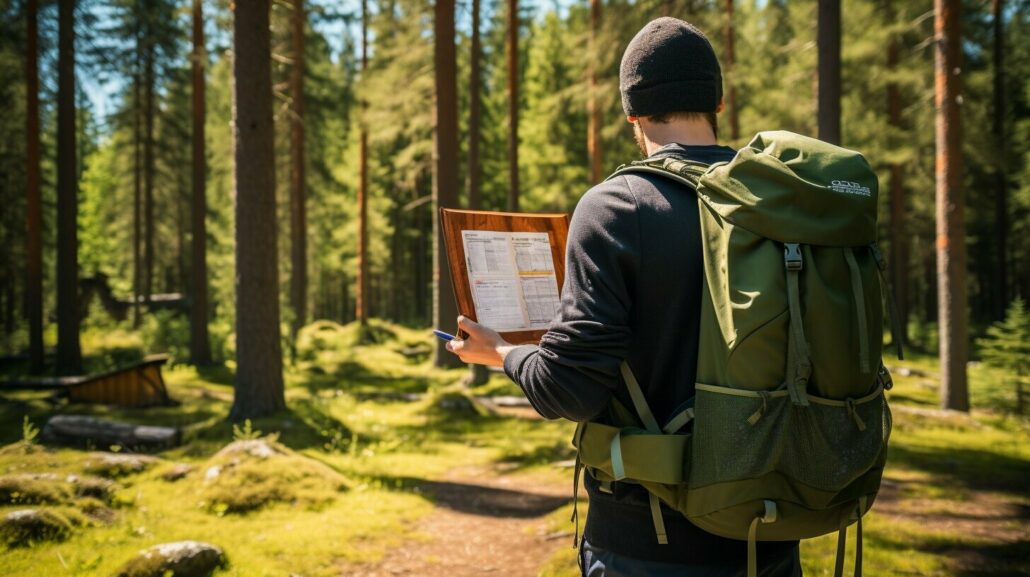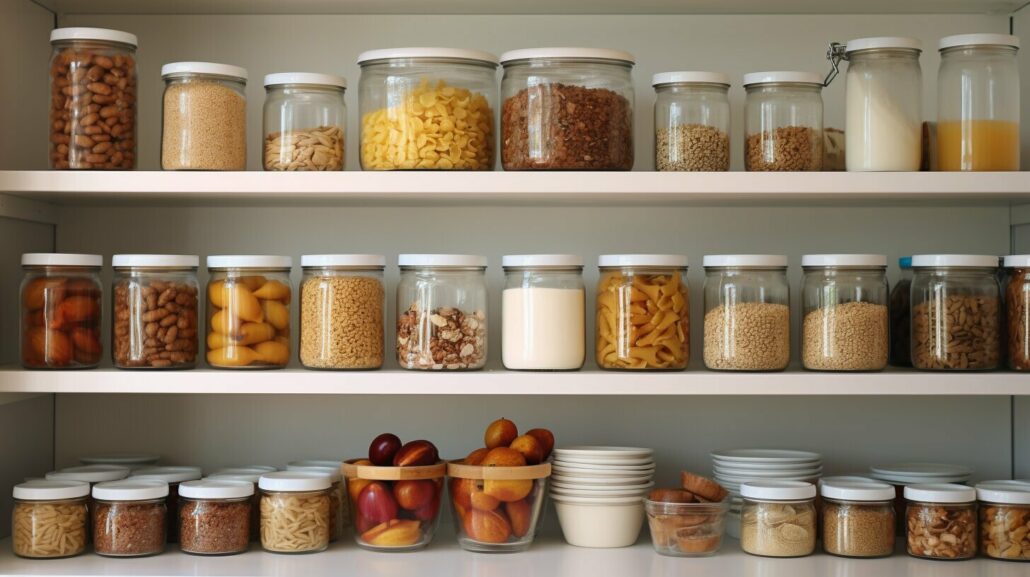Welcome to our Mastering Prepping Basics: Your Essential Survival Guide, where we will equip you with the necessary knowledge, skills, and mindset to navigate emergencies and disasters.
Key Takeaways:
- Prepping Basics: Learn essential tips and techniques to ensure you are prepared for any emergency.
- Prepping Essentials: Build a solid foundation with the right supplies and skills for effective preparedness.
- Food and Water: Discover strategies for stockpiling and purifying resources for sustenance during crises.
- Shelter and Security: Protect yourself and your loved ones by fortifying your residence and enhancing security measures.
- Communication: Stay connected with loved ones and authorities by utilizing effective communication tools and strategies.
Our comprehensive guide covers all aspects of prepping, from the essentials of food and water to developing survival skills and acquiring the necessary gear. We emphasize the importance of tailoring your preparedness plans to your specific region and offer guidance on staying safe and secure while away from home. With step-by-step instructions, expert advice, and practical tips, we aim to empower you to thrive in challenging situations and create a more secure future.
Prepping Essentials: Building a Solid Foundation
Before diving into the world of prepping, it’s crucial to understand the essentials that lay the foundation for effective preparedness. Whether you’re a beginner or looking to enhance your skills, having the right supplies, knowledge, and mindset is key to navigating emergencies with confidence.
Essential Supplies
Building a stockpile of essential supplies is a vital step in preparing for any emergency. These supplies should include non-perishable food items, clean drinking water, first aid kits, flashlights, and batteries. A complete inventory of your supplies is essential to ensure you have everything you need in case of a crisis. Consider creating a table to keep track of your inventory, including expiration dates and quantities.
Developing Prepping Skills
Aside from supplies, developing skills that are essential for survival is equally important. Learning basic first aid techniques, navigation skills, and how to start a fire are just a few examples. These skills will prove invaluable during emergencies and can make all the difference when it comes to your safety and well-being.
Adapting to Changing Circumstances
While having a solid foundation is crucial, it’s important to remain adaptable and open to change. Prepping essentials can vary depending on your location, climate, and personal circumstances. Take the time to evaluate potential risks in your area and tailor your preparedness plan accordingly. This could include considerations for natural disasters, power outages, or even social unrest.
Summary
Building a solid foundation in prepping essentials is essential for effective emergency preparedness. This includes having necessary supplies, developing crucial skills, and being adaptable to changing circumstances. Remember to create an inventory of your supplies, learn essential skills, and adapt your plan based on the potential risks you might face. By taking these steps, you’ll be better equipped to protect yourself and your loved ones during challenging situations.
Food and Water: Sustenance for Survival
In times of crisis, access to adequate food and water becomes a top priority for survival. When disaster strikes, it is essential to have a well-stocked pantry and reliable sources of clean water to sustain ourselves and our loved ones. The Mastering Prepping Basics guide emphasizes the significance of food and water in ensuring our survival and provides invaluable tips and strategies for securing these vital resources.
Stockpiling Food: Ensuring Long-Term Nourishment
One of the key elements of effective prepping is building a stockpile of non-perishable food items that can sustain us during an emergency. The guide recommends creating a well-rounded pantry that includes a variety of food groups, such as grains, protein sources, canned fruits and vegetables, and nutritious snacks. It advises rotating the stockpile regularly to ensure freshness and avoid expiration.
Water Purification: Making Every Drop Count
Access to clean water is crucial for survival, as contaminated water can lead to severe health problems. The guide provides detailed instructions on various water purification methods, including boiling, chemical treatments, and using water filters. It emphasizes the importance of having multiple means of purifying water to adapt to different situations and recommends keeping water purification tablets and portable filters in your emergency kit.
| Food Stockpiling Tips | Water Purification Methods |
|---|---|
|
|
“Having a well-stocked pantry and reliable sources of clean water is essential for surviving emergencies. The Mastering Prepping Basics guide provides invaluable insights and practical advice on stockpiling food and purifying water, ensuring our sustenance during times of crisis.”
The Mastering Prepping Basics guide highlights the importance of food and water as the foundation of survival preparedness. It encourages readers to prioritize these essential resources, offering step-by-step instructions, expert recommendations, and practical tips for securing sufficient food and clean water. By following the guide’s advice, we can ensure our nourishment and hydration during emergencies, helping us withstand the challenges that come our way.
Shelter and Security: Protecting Yourself and Your Loved Ones
When disaster strikes, having a safe and secure place to seek shelter is essential for protecting yourself and your loved ones. In times of crisis, your home can offer a familiar and comfortable environment, but it’s important to fortify it against potential threats. By taking the necessary precautions and implementing security measures, you can enhance the safety of your residence and ensure peace of mind.
One effective way to safeguard your home is by reinforcing entry points such as doors and windows. Consider installing sturdy locks, deadbolts, and security bars to deter unauthorized access. Additionally, reinforcing doors with steel frames and adding laminated glass to windows can provide an extra layer of protection against intruders and extreme weather conditions.
Furthermore, creating a secure perimeter around your property can help deter potential threats. Installing motion-sensor lights, security cameras, and alarm systems can serve as effective deterrents and provide valuable surveillance. Additionally, maintaining well-trimmed shrubs and trees near windows and doors can eliminate potential hiding spots for intruders.
In addition to fortifying your residence, it’s crucial to have a backup plan in case you need to evacuate. Identify nearby shelters or safe locations where you can seek refuge during emergencies. Consider creating an emergency kit that includes essential items like food, water, blankets, and a first aid kit. Familiarize yourself with evacuation routes and have a communication plan in place so you can stay connected with your loved ones during emergencies.
| Key Tips for Shelter and Security |
|---|
| Reinforce doors and windows with sturdy locks, deadbolts, and security bars. |
| Install motion-sensor lights, security cameras, and alarm systems for added security. |
| Create a secure perimeter by maintaining clear visibility and eliminating potential hiding spots. |
| Identify nearby shelters or safe locations and have an emergency kit ready for evacuation. |
| Establish a communication plan to stay connected with your loved ones during emergencies. |
Our Commitment to Your Safety
“At Mastering Prepping Basics, our top priority is your safety and well-being. We are dedicated to equipping you with the knowledge, skills, and resources you need to navigate emergencies confidently. By emphasizing the importance of shelter and security, we aim to help you create a safe haven for yourself and your loved ones. Whether you’re fortifying your home, preparing for potential evacuations, or staying connected during crises, we’re here to guide you every step of the way. Together, we can build resilience and face any challenge that comes our way.”
Communication: Staying Connected in Times of Crisis
In times of crisis, clear and reliable communication can make all the difference between staying informed and feeling isolated. Being able to connect with loved ones, emergency services, and relevant information sources is crucial for navigating emergencies effectively. Here, we will explore the various tools and strategies that can help you stay connected when it matters most.
Communication Tools
Having the right communication tools in your emergency preparedness kit can greatly enhance your ability to stay connected during a crisis. Consider including items such as a portable radio, a charged mobile phone with a backup battery, and a hand-crank or solar-powered emergency radio. These tools can provide access to vital information and help you stay updated on the latest developments.
Communication Strategies
During a crisis, communication channels may be overwhelmed or disrupted. It is important to have alternative strategies to ensure you can still reach out for help or relay important information. Creating a communication plan with your loved ones ahead of time can help you stay in touch and coordinate your actions. Consider establishing an agreed-upon meeting point, identifying a designated emergency contact outside of your immediate area, and practicing different ways to reach each other, such as text messages or social media platforms.
Additionally, staying informed through official channels, such as emergency alerts, local news stations, and government websites, can provide you with the most up-to-date information about the situation. Following reliable sources and verifying information before sharing it can help prevent the spread of misinformation.
| Communication Tools | Communication Strategies |
|---|---|
| Portable radio | Creating a communication plan |
| Charged mobile phone with backup battery | Establishing an agreed-upon meeting point |
| Hand-crank or solar-powered emergency radio | Identifying a designated emergency contact |
Remember, communication is key in times of crisis. By having the right tools and strategies in place, you can stay connected, informed, and better prepared to overcome the challenges that may arise.
Developing Survival Skills: Thriving in Challenging Situations
Developing a range of survival skills empowers you to adapt and overcome the challenges that emergencies may present. From finding clean water to building a fire, these essential skills are crucial for ensuring your safety and well-being. In this section, we will explore some key survival techniques and prepping skills that can make a difference during times of crisis.
One of the most vital skills to acquire is the ability to treat water for consumption. In an emergency situation, clean drinking water may not be readily available. Understanding different water purification methods, such as boiling, using water filters, or chemical treatments, can help ensure that you have a safe and reliable source of hydration.
Another important skill is signaling for help. Whether you’re lost in the wilderness or trapped in a disaster-stricken area, knowing how to attract attention can be a lifesaver. Master techniques like creating smoke signals, using signaling mirrors, or even using a whistle to alert others of your presence.
| Skill | Description |
|---|---|
| Water Treatment | Learn different methods to purify water, such as boiling, filtration, and chemical treatments. |
| Signaling for Help | Master various techniques to attract attention, including smoke signals, signaling mirrors, and whistles. |
| Fire-Building | Acquire the skills to start a fire using natural materials, such as flint and tinder. |
Additionally, knowing how to build a fire can provide warmth, a means of cooking food, and a sense of security. Understanding different fire-building techniques, such as using flint and tinder, can be invaluable in survival scenarios.
By developing these survival skills, you enhance your ability to navigate and thrive in challenging situations. Remember to practice these skills regularly and share your knowledge with others. Together, we can build a resilient and prepared community ready to face any emergency that comes our way.
Essential Prepping Gear: Tools for Preparedness
Equipping yourself with the right gear is vital for effectively navigating emergencies and maintaining your safety. In our comprehensive survival guide, we emphasize the importance of being prepared with essential prepping gear that can help you thrive in challenging situations. Whether you’re a seasoned prepper or just starting your journey, having the right tools can make all the difference.
Must-Have Gear for Every Prepper
When it comes to prepping gear, there are a few essentials that should be in every emergency kit. Our guide recommends starting with the following items:
- A reliable water filter or purification system to ensure access to clean drinking water.
- A durable flashlight with extra batteries to provide illumination during power outages.
- A well-stocked first aid kit to address minor injuries and medical emergencies.
- A multi-tool, which combines various tools into one compact device for versatility.
- An emergency radio to stay informed about the latest updates and essential information.
Gear for Specific Situations
In addition to the must-have items, it’s important to tailor your gear to specific situations and threats. For example, if you live in an area prone to natural disasters like hurricanes or earthquakes, consider adding the following:
| Item | Purpose |
|---|---|
| Emergency Blankets | To provide warmth in cold conditions. |
| Duct Tape | To make quick repairs or secure materials. |
| Emergency Whistle | To signal for help in case of emergencies. |
| Gas Shut-off Wrench | To safely shut off the gas supply in your home. |
Remember, being prepared means having the right gear, but it’s also about knowing how to use it effectively. Our guide provides step-by-step instructions and expert advice on utilizing your gear to its full potential. Additionally, we encourage regular maintenance and checks to ensure that your gear is in optimal condition when you need it most.
By investing in essential prepping gear and acquiring the necessary skills, you can increase your chances of survival and create a sense of security in uncertain times. Stay prepared, stay safe.
Tailoring Preparedness Plans: Adapting to Regional Threats
Recognizing that every region faces unique threats, tailoring your preparedness plans is crucial to ensuring comprehensive readiness. By understanding the specific risks and challenges you may encounter in your area, you can develop a plan that addresses these threats effectively. Whether you reside in an area prone to natural disasters, extreme weather conditions, or other emergencies, adapting your preparedness strategy is key to safeguarding yourself and your loved ones.
Here are some prepping tips and essentials for beginners to consider when tailoring their preparedness plans:
- Research local hazards: Start by understanding the potential threats in your region. Identify common natural disasters, such as hurricanes, earthquakes, wildfires, or flooding, and determine their likelihood and severity.
- Create a personalized emergency kit: Tailor your emergency kit to suit the specific needs of your region. Include essential items such as non-perishable food, water, a flashlight, batteries, a first aid kit, and any additional items recommended for your area’s unique challenges.
- Plan for evacuation: If your area is prone to evacuation orders, have a clear evacuation plan in place. Identify multiple evacuation routes, establish a meeting point for your family, and ensure you have necessary supplies and documents easily accessible.
- Stay informed: Sign up for local emergency alerts and stay tuned to reliable sources of information such as local news stations or emergency management agencies. Familiarize yourself with evacuation procedures, emergency shelters, and community resources available in your area.
Tailoring your preparedness plans is an ongoing process. Regularly review and update your strategy as circumstances change or new threats emerge in your region. By taking a proactive approach to preparedness, you can enhance your resilience and minimize the impact of emergencies on your life.
| Risk | Actions |
|---|---|
| Earthquakes | Secure heavy furniture, create an earthquake kit, and establish a safe meeting place. |
| Hurricanes | Board up windows, trim trees, stock up on non-perishable food and water, and prepare for possible evacuation. |
| Wildfires | Create defensible space around your property, have a wildfire evacuation plan, and pack essential items like masks, important documents, and medications. |
| Flooding | Elevate valuables and electrical equipment, secure important documents in waterproof containers, and be prepared to evacuate if necessary. |
Preparedness on the Go: Navigating Emergencies Away from Home
Being prepared doesn’t stop at home; it’s essential to extend your readiness to accommodate emergencies away from your familiar surroundings. Whether you’re traveling or find yourself in an unfamiliar location during a crisis, having a plan in place and the necessary supplies on hand can make all the difference. Here, we’ll explore some key strategies for staying safe and secure while on the go.
First and foremost, it’s crucial to pack a mobile emergency kit that includes essential supplies such as food, water, a first aid kit, and necessary medication. Consider the duration of your trip, the number of people involved, and any specific needs or challenges you may face. Additionally, don’t forget to include important documents, extra cash, and a list of emergency contacts.
Another vital aspect of preparedness on the go is staying informed. Stay up to date with reliable sources of information, such as local news or emergency notification systems. Familiarize yourself with the emergency protocols and evacuation routes of the area you’re visiting. Additionally, ensure that you have a means of communication, such as a fully charged cell phone or a portable radio.
Lastly, it’s essential to maintain situational awareness and adaptability. Stay vigilant and aware of your surroundings, especially in unfamiliar environments. Trust your instincts, follow instructions from local authorities, and be prepared to adjust your plans as needed. Building a network of trusted contacts, both locally and among fellow travelers, can also provide invaluable support and resources during an emergency.
FAQ
Q: What is Mastering Prepping Basics: Your Essential Survival Guide?
A: Mastering Prepping Basics: Your Essential Survival Guide is a comprehensive roadmap for navigating unpredictable challenges and developing the necessary skills, mindset, and resources for thriving in emergencies and disasters.
Q: What topics does the guide cover?
A: The guide covers essential topics such as food, water, shelter, security, and communication, emphasizing the importance of self-reliance and adaptability.
Q: What does the guide provide?
A: The guide provides step-by-step instructions, expert insights, and practical advice on creating an emergency plan and mastering basic survival skills.
Q: How does the guide empower readers?
A: The guide encourages a proactive approach to preparedness and empowers readers to navigate challenges, adapt to changing circumstances, and build resilience for a more secure future.
Q: What essential supplies does the guide recommend?
A: The guide highlights the importance of having essential supplies like water, food, temperature control, light, power, communication tools, and a first aid kit.
Q: What survival skills does the guide recommend learning?
A: The guide recommends learning first aid skills and survival skills like treating water, signaling for help, and building a fire.
Q: How can readers tailor their preparedness plans?
A: The guide suggests tailoring preparedness plans to the specific threats and disasters in one’s area and includes information on preparing for emergencies while away from home.










